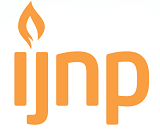Incidence and Management of Scabies in Boarding School: Perception from Residents
DOI:
https://doi.org/10.18196/ijnp.v6i1.13355Keywords:
Scabies, Boarding School, Infection, Perception, Risk FactorAbstract
Background: Scabies is a Sarcoptes scabei infection of the human epidermis. This disease is often found in patients who live in groups, such as in boarding schools. Although the risk factors, knowledge, and treatment of scabies have been known, the incidence of scabies in Islamic boarding schools is still high. There is a perception that scabies is a common disease among students. Scabies can interfere with the quality of life or activities of sufferers.
Objective: Therefore, it is necessary to study the perceptions of managers and residents of boarding schools regarding the management and incidence of scabies in Islamic boarding schools.
Methods: This research was conducted in an Islamic boarding school using a qualitative method. The information was obtained from 40 participants: school leaders or managers, teachers, non-educational staff, students, and parents of students in boarding schools. Information was collected using a google form, then coded and grouped based on the item. This study has been declared ethically feasible by the research ethics committee.
Result: The result showed that participants considered scabies a skin disease that could interfere with daily activities. It could be transmitted through direct contact, using toiletries or clothes together. School leadership policies, based on good knowledge, followed by the appropriate behavior of all school residents, had an important role in the incidence of scabies in boarding schools.
Conclusion: The participants had explained similar perceptions about scabies and their management in their boarding school. Participants agreed that scabies could be eliminated by jointly implementing healthy lifestyle behaviors based on Islamic values. The researchers suggest continuing and improving activities and management of students with scabies so that the school can be free from scabies. Second, further research can be carried out in schools with a high incidence of scabies so that it can be compared and find the basic problem about why there is still a high incidence of scabies in boarding schools in Indonesia.
References
Aminjati, H. W., & Estri, S. A. T. S. (2014). Prevalensi scabies pada panti asuhan perkotaan dengan pedesaan di kabupaten kulonprogo. UMY.
Chandler, D., & Fuller, L. C. (2019). A Review of Scabies: An Infestation More than Skin Deep. Dermatology, 235(2): 79–90. https://doi.org/10.1159/000495290
Creswell, J. W. (2017). Research Design, Pendekatan Kualitatif, Kuantitatif dan Mixed. Pustaka Pelajar.
Engelman, D., Yoshizumi, J., Hay, R. J., Osti, M., Micali, G., Norton, S., Walton, S., Boralevi, F., Bernigaud, C., Bowen, A. C., Chang, A. Y., Chosidow, O., Estrada-Chavez, G., Feldmeier, H., Ishii, N., Lacarrubba, F., Mahé, A., Maurer, T., Mahdi, M. M. A., … Fuller, L. C. (2020). The 2020 International Alliance for the Control of Scabies Consensus Criteria for the Diagnosis of Scabies. British Journal of Dermatology, 183(5), 808–820. https://doi.org/10.1111/bjd.18943
Gunning, K., Kiraly, B., & Pippitt, K. (2019). Lice and Scabies: Treatment Update. American Family Physician, 99(10), 635–642.
Hidayati, T., & Akrom. (2006). Persepsi dan Perilaku Murid Muallimin Muhammadiyah terhadap Pengobatan Skabies. Prosiding Seminar Nasional Farmakologi.
Hilma, U. D., & Ghazali, L. (2014). Faktor-faktor yang mempengaruhi kejadian skabies di pondok pesantren mlangi nogotirto gamping sleman yogyakarta. JKKI, 6(3): 148-157. https://doi.org/10.20885/JKKI.Vol6.Iss3.Art6
Hulaila, A., Musthofa, S. B., Kusumawati, A., & Prabamurti, P. N. (2021). Analisis Pelaksanaan Program Pos Kesehatan Pesantren (Poskestren) di Pondok Pesantren Durrotu Aswaja Sekaran Gunungpati Semarang. Media Kesehatan Masyarakat IndonesiA, 20(1), 12–18. https://doi.org/10.14710/mkmi.20.1.12-18
Ibadurrahmi, H., Veronica, S., & Nugrohowati, N. (2017). Faktor-Faktor Yang Berpengaruh Terhadap Kejadian Penyakit Skabies pada Santri Di Pondok Pesantren Qotrun Nada Cipayung Depok Februari Tahun 2016. Jurnal Profesi Medika : Jurnal Kedokteran dan Kesehatan, 10(1). https://doi.org/10.33533/jpm.v10i1.12
Lopes, M. J., Teixeira da Silva, E., Ca, J., Gonçalves, A., Rodrigues, A., Manjuba, C., Nakutum, J., D’Alessandro, U., Achan, J., Logan, J., Bailey, R., Last, A., Walker, S., & Marks, M. (2020). Perceptions, attitudes and practices towards scabies in communities on the Bijagós Islands, Guinea-Bissau. Transactions of the Royal Society of Tropical Medicine and Hygiene, 114(1), 49–56. https://doi.org/10.1093/trstmh/trz102
Mayrona, C. T., Subchan, P., & Widodo, A. (2018). Pengaruh sanitasi lingkungan terhadap prevalensi terjadinya penyakit scabies di pondok pesantren matholiul huda al kautsar kabupaten pati. Diponegoro Medical Journal, 7(1), 100–112. https://doi.org/10.14710/dmj.v7i1.19354
Pedoman Penyelenggaraan Pesantren Sehat. (2019). Kementerian Kesehatan RI.
Purwanto, N. F. (2016). Hubungan antara Penyakit Skabies dengan Tingkat Kualitas Hidup Santri di Pondok Pesantren Al Muayyad Surakarta. Eprints UMS.
Ratnaningrum, K., & Avidah, A. (2020). The Difference in Incidence of Scabies between Conventional and Modern Boarding School. Mutiara Medika: Jurnal Kedokteran Dan Kesehatan, 20(1): 42-44. https://doi.org/10.18196/mm.200141
Ridwan, A., Sahrudin, & Ibrahim, K. (2017). Hubungan Pengetahuan, Personal Hygiene, Dan Kepadatan Hunian Dengan Gejala Penyakit Skabies Pada Santri Di Pondok Pesantren Darul Muklisin Kota Kendari 2017. Jurnal Ilmiah Mahasiswa Kesehatan Masyarakat, Vol. 2/NO.6. http://ojs.uho.ac.id/index.php/JIMKESMAS/article/viewFile/2914/2173
Romani, L., Koroivueta, J., Steer, A. C., Kama, M., Kaldor, J. M., Wand, H., Hamid, M., & Whitfeld, M. J. (2015). Scabies and impetigo prevalence and risk factors in Fiji: A national survey. PLoS Negl Trop Dis, 9(3). https://doi.org/10.1371/journal.pntd.0003452
Setiawan, A. D. (2017). Persepsi Pengelola Pondok Pesantren Walisongo Kecamatan Pontianak Kota Terhadap Penanganan Kasus Skabies Tahun 2017. 16.
Setiawan, A. D. (2018). Persepsi Pengelola Pondok Pesantren Walisongo Kecamatan Pontianak Kota Terhadap Penanganan Kasus Skabies Tahun 2017. Jurnal Mahasiswa PSPD FK Universitas Tanjungpura, 4(1).
Tresnasari, C., Respati, T., Maulida, M., Triyani, Y., Tejasari, M., Kharisma, Y., & Ismawati. (2018). Understanding Scabies in Religious Boarding School (Pesantren). Proceedings of the Social and Humaniora Research Symposium (SoRes 2018). https://doi.org/10.2991/sores-18.2019.120
Widaty, S., Soebono, H., Nilasari, H., Listiawan, M. Y., Siswati, A. S., Triwahyudi, D., Rosita, C., Hindritiani, R., Yenny, S. W., & Menaldi, S. L. (2017). Panduan Praktek Klinis bagi Dokter Spesialis Kulit dan Kelamin Indonesia. PERDOSKI.
Worth, C., Heukelbach, J., Fengler, G., Walter, B., Liesenfeld, O., & Feldmeier, H. (2012). Impaired quality of life in adults and children with scabies from an impoverished community in Brazil. Int J Dermatol, 51(3), 275–282. https://doi.org/10.1111/j.1365-4632.2011.05017.x
Downloads
Published
Issue
Section
License
License
Articles published in the IJNP (Indonesian Journal of Nursing Practices) are licensed under a Attribution 4.0 International (CC BY 4.0) license. You are free to:
- Share — copy and redistribute the material in any medium or format.
- Adapt — remix, transform, and build upon the material for any purpose, even commercially.
This license is acceptable for Free Cultural Works. The licensor cannot revoke these freedoms as long as you follow the license terms. Under the following terms:
Attribution — You must give appropriate credit, provide a link to the license, and indicate if changes were made. You may do so in any reasonable manner, but not in any way that suggests the licensor endorses you or your use.
- No additional restrictions — You may not apply legal terms or technological measures that legally restrict others from doing anything the license permits.
Copyright
Authors who publish with IJNP (Indonesian Journal of Nursing Practices) agree to the following terms:
- Authors retain copyright and grant IJNP (Indonesian Journal of Nursing Practices) the right of first publication with the work simultaneously licensed under an Attribution 4.0 International (CC BY 4.0) that allows others to remix, adapt and build upon the work with an acknowledgment of the work's authorship and of the initial publication in IJNP (Indonesian Journal of Nursing Practices).
- Authors are permitted to copy and redistribute the journal's published version of the work (e.g., post it to an institutional repository or publish it in a book), with an acknowledgment of its initial publication in IJNP (Indonesian Journal of Nursing Practices).














